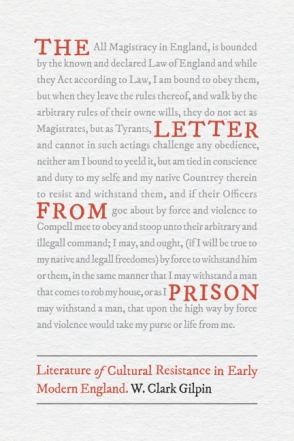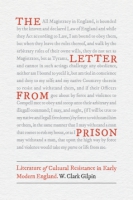
The Letter from Prison
Literature of Cultural Resistance in Early Modern England
W. Clark Gilpin
The Letter from Prison
Literature of Cultural Resistance in Early Modern England
W. Clark Gilpin
Letters from prison testifying to deeply felt ethical principles have a long history, extending from antiquity to the present day. In the early modern era, the rise of printing houses helped turn these letters into a powerful form of political and religious resistance. W. Clark Gilpin’s fascinating book examines how letter writers in England—ranging from archbishops to Quaker women—consolidated the prison letter as a literary form.
- Description
- Bio
- Table of Contents
- Sample Chapters
- Subjects
Drawing from a large collection of printed prison letters written from the reign of Henry VIII to the closing decades of the seventeenth century, Gilpin explores the genre's many facets within evolving contexts of reformation and revolution. The writers of these letters portrayed the prisoner of conscience as a distinct persona and the prison as a place of redemptive suffering where bearing witness had the power to change society.
The Letter from Prison features a diverse cast of characters and a literary genre that combines drama and inspiration. It is sure to appeal to those interested in early modern England, prison literature, and cultural forms of resistance.
W. Clark Gilpin is Margaret E. Burton Distinguished Service Professor Emeritus at the University of Chicago Divinity School. He is the author of Religion Around Emily Dickinson, also published by Penn State University Press.
Preface
Acknowledgments
1. Witnesses
Part 1: Solidarity
2. Inscribing Communities
3. Farewell
Part 2: Politics
4. The Eyewitness
5. Experiencing Defeat
Part 3: Discipline
6. Transfiguring Space
7. “The Dungeon of Thyself ”
Notes
Bibliography
Index
Download a PDF sample chapter here: Chapter 1
Mailing List
Subscribe to our mailing list and be notified about new titles, journals and catalogs.



